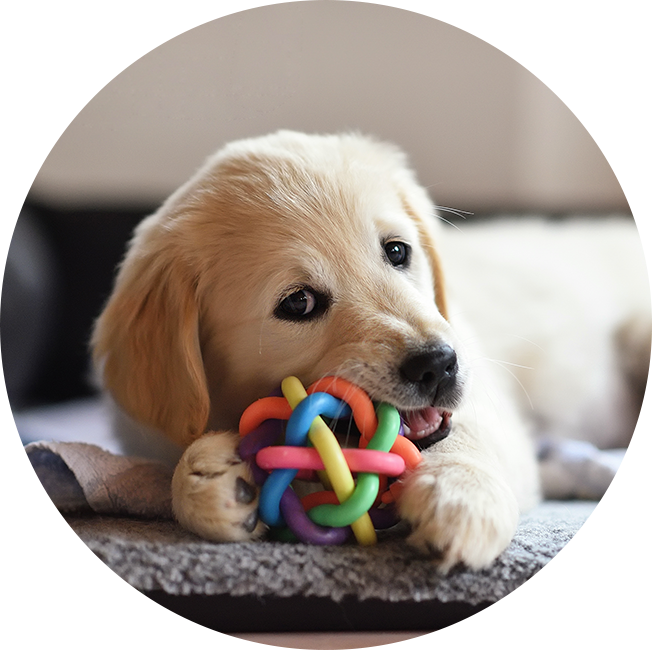Professional Dental Cleanings
Dental cleanings under anesthesia, which are often needed by 2 to 3 years of age, are the only way to effectively clean plaque and tartar below the gumline. Our dental procedures include full-mouth dental radiographs (i.e., X-rays), which allows our veterinarians to assess each tooth’s root structure and surrounding bone. These images let the veterinarian know if teeth need to be removed. If extractions are necessary, we will use pain medications and/or nerve blocks to ensure your pet stays pain-free and relaxed. Although many owners worry about their pet’s recovery, pets typically feel much better once diseased teeth are removed. After a healing period of 7 to 10 days, most pets can return to eating dry food.


Dental Home Care
When combined with regular exams and cleanings, consistent home care including toothbrushing, feeding a dental diet, or providing dental chews can reduce plaque and tartar and keep harmful dental disease at bay.
While periodontal disease can be challenging to identify in its early stages, visible signs of disease progression can include bad breath, drooling, visibly damaged teeth, facial swelling, pawing or rubbing at the mouth, loss of appetite, and weight loss. If your pet is experiencing any of these signs, schedule a dental consultation at Wellness Animal Hospital.

Professional Dental Cleanings
Dental cleanings under anesthesia, which are often needed by 2 to 3 years of age, are the only way to effectively clean plaque and tartar below the gumline. Our dental procedures include full-mouth dental radiographs (i.e., X-rays), which allows our veterinarians to assess each tooth’s root structure and surrounding bone. These images let the veterinarian know if teeth need to be removed. If extractions are necessary, we will use pain medications and/or nerve blocks to ensure your pet stays pain-free and relaxed. Although many owners worry about their pet’s recovery, pets typically feel much better once diseased teeth are removed. After a healing period of 7 to 10 days, most pets can return to eating dry food.

Dental Home Care
When combined with regular exams and cleanings, consistent home care including toothbrushing, feeding a dental diet, or providing dental chews can reduce plaque and tartar and keep harmful dental disease at bay.
While periodontal disease can be challenging to identify in its early stages, visible signs of disease progression can include bad breath, drooling, visibly damaged teeth, facial swelling, pawing or rubbing at the mouth, loss of appetite, and weight loss. If your pet is experiencing any of these signs, schedule a dental consultation at Wellness Animal Hospital.


